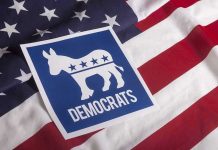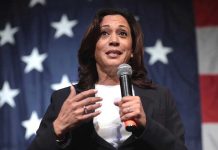
A hidden threat to your electricity bills is lurking in the form of inefficient consumer behaviors.
Story Highlights
- Consumer behavior significantly contributes to energy inefficiency.
- Buildings account for the largest share of U.S. electricity use.
- Behavioral change is essential to align consumption with grid needs.
- Persistent inefficiencies impact both the economy and environment.
Consumer Behavior’s Role in Energy Inefficiency
Consumer behavior has emerged as a pivotal factor in the ongoing issues of energy inefficiency and grid strain. Reports show that residential and commercial sectors are responsible for over a quarter of U.S. end-use energy consumption. This misuse of electricity, particularly during peak hours, exacerbates costs and reliability risks. The focus has shifted from technological advancements to the need for a behavioral change to address these pressing issues.
Despite advancements in smart technologies, there’s a significant gap between available efficiency measures and actual consumer practices. The emphasis on adopting demand-response programs and reducing excessive peak-time usage remains crucial. However, limited adoption of these practices continues to strain the grid, highlighting the need for enhanced consumer education and incentives for off-peak usage.
The Impact of Inefficient Electricity Use
Buildings have become the largest consumers of electricity, with HVAC systems and appliances playing a significant role. This heavy reliance on electricity is not only costly but also contributes to inefficiencies that challenge sustainability goals. The consequences are particularly severe during peak demand periods, leading to potential outages and higher utility bills.
The implications of these inefficiencies are both short-term and long-term. In the short term, consumers face higher costs and the risk of outages. In the long term, the failure to reduce emissions and transition to renewable energy sources could result in higher infrastructure costs. Vulnerable populations, especially low-income households, are disproportionately affected by these high energy costs.
Strategies for Addressing the Crisis
Experts agree that a combination of education, incentives, and technology deployment is necessary to tackle energy inefficiency. Behavioral interventions such as dynamic pricing, real-time feedback, and automation can help align consumption with grid needs. However, without strong incentives and access to efficiency technologies, consumer education alone may not suffice.
Net Zero: How to Cut Those Electricity Bills
Just watch the wind, and the sun, and the wind and the sun.https://t.co/Ka8EdZAE0Z
— Andrew Stuttaford (@AStuttaford) August 22, 2025
Despite the challenges, there is a growing consensus on the need for behavioral change alongside technological upgrades to achieve meaningful efficiency gains. The focus on smarter consumption patterns and demand-response behaviors can help reduce peak demand and promote sustainability. Addressing these issues is vital for a balanced energy future that aligns with economic, social, and environmental goals.
Sources:
U.S. Energy Information Administration (EIA)
Diversegy (Commercial Energy Usage)
Nature (Energy Consumption Patterns)



